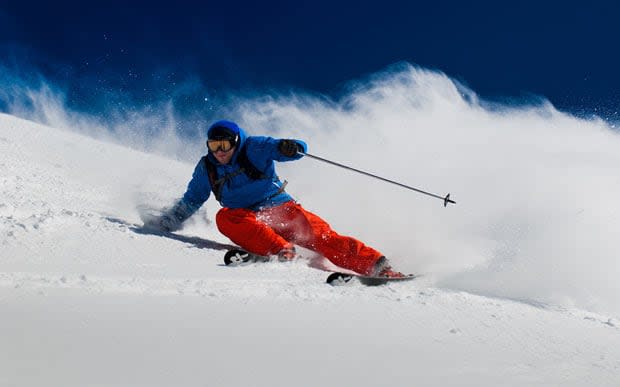Val d'Isère: piste guide


Though the slopes in Val d’Isère are enjoyed by all, the ski area is best suited to strong intermediates and better. Even the gradient of the main nursery slope at the bottom of the pistes is demanding for a complete novice. A blue run here could easily be classified as a red in another resort, while black really does mean a serious challenge.
On the Val side, the mountain is split into four sectors, two of which can be reached direct from resort. It is easy, depending on your skill level, to move from one sector to another on pistes, and the links to Tignes are seamless.
In high season, when lifts are at capacity, Val has a huge advantage over other major resorts in the Alps: there are no less than eight main mountain access points, from Le Fornet to La Daille, so rush hour queues are easily avoided by a savvy choice of lift.
The Train Rouge, which is neither red nor a train, is a reliable, free ski bus that loops all eight as well as Val's satellite villages every three minutes at peak times. During the day it is an integral part of the lift system.
Solaise was the first of Val d'Isère's ski areas. Opened in the late 1930s with just a drag lift and a cable-car, it’s now served by the new Solaise gondola which opened in 2016. Off the top, at 2,560m, is a network of intermediate runs of varying standard, as well as the Rhone-Alpes black, an FIS women's downhill course.
Bellevarde, reached by the Olympique jumbo gondola or two chairs, rises up to 2,827m on the other side of the resort. La Face, the steep and deeply challenging black back down, was the venue for the men’s downhill at the 1992 Albertville Olympics and the 2009 World Championships, but is otherwise rarely raced. The backside is the starting point for an enormous area of varied slopes that head towards Tignes in one direction and back down to Val, via a circuitous route, in the other.
Le Fornet, the hamlet at the western and far end of the resort, can be reached from the pistes of Solaise, or by regular free ski bus from Val d'Isère. From here, a cable car followed by a gondola and other lifts, takes you up to the summer ski area on the Pissaillas glacier beneath the 3,488m summit of the Pointe du Montet. The runs back down and across toward La Solaise form a giant and mainly intermediate playground. It's possible, using a lot of lifts and plenty of pistes, to travel all the way to Tignes Les Brevières from the top of the glacier here.
La Daille is a hamlet at the eastern approach of the valley. Reached by the ski bus, from here you can head towards Tignes. Alternatively – and better – ride the Funival underground funicular to the top of Bellevarde. This is starting point for the thrilling OK men’s downhill course back down to La Daille.
The main nursery slope is at the bottom of the pistes beside the resort centre. The slope suits learners well, apart from the top few metres are quite steep, and the lift serving it is free. There’s another beginner area at La Daille as well as one on Solaise, where the Madeleine Express lift serves a gentle, undulating slope for those who have progressed beyond first turns.
The Oakley Valpark terrain park in the Bellevarde/La Daille sector is at the foot of the Marmottes chair and served by its own button lift, which it shares with the adjacent Stade de Slalom, a permanent racecourse where you can run gates against the clock. The park has an excellent range of rails and kickers suitable for all standards.
A post shared by Val d'Isère (@valdisere) on Jan 15, 2017 at 6:43am PST
Intersport
Val d'isere




